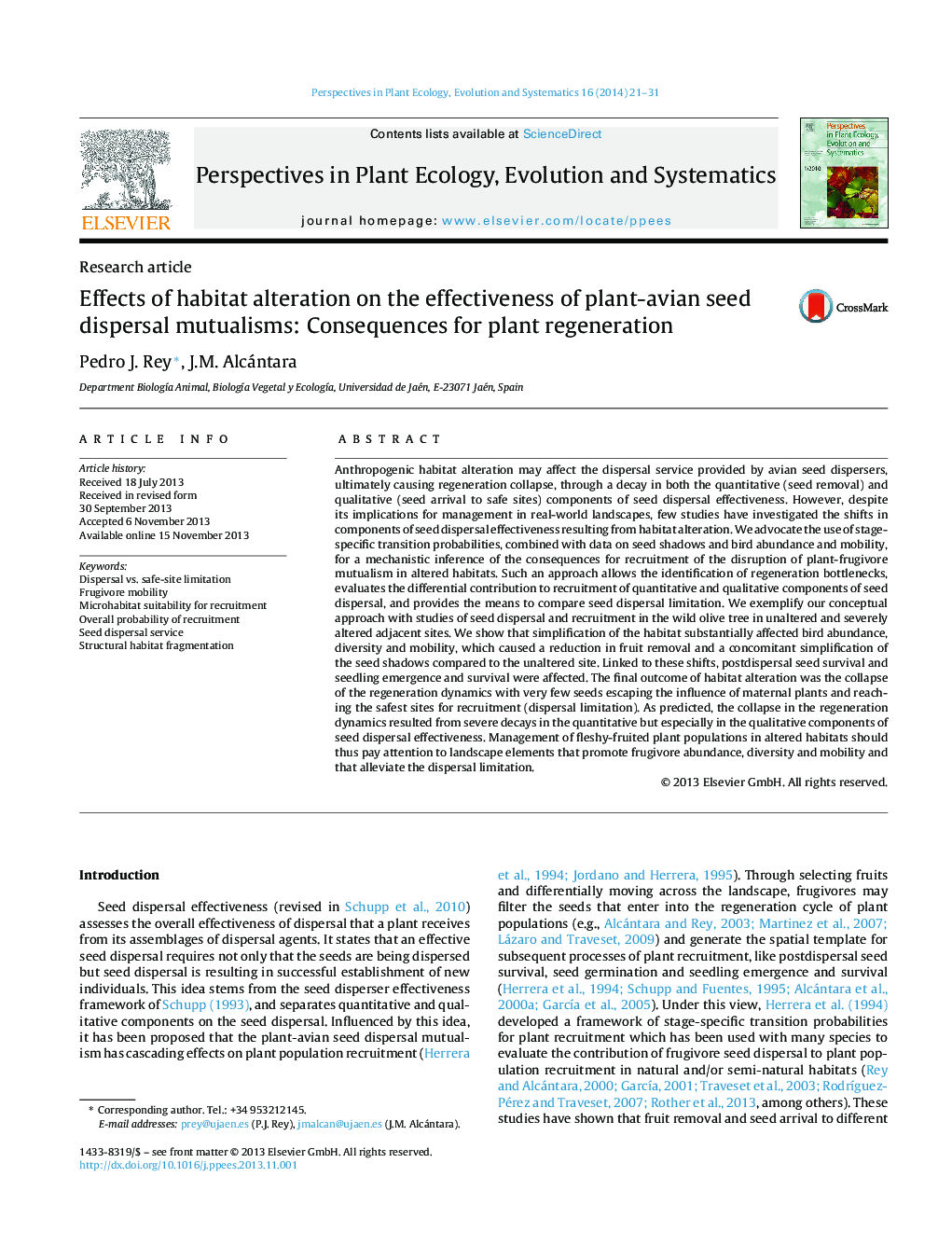| Article ID | Journal | Published Year | Pages | File Type |
|---|---|---|---|---|
| 4401005 | Perspectives in Plant Ecology, Evolution and Systematics | 2014 | 11 Pages |
Anthropogenic habitat alteration may affect the dispersal service provided by avian seed dispersers, ultimately causing regeneration collapse, through a decay in both the quantitative (seed removal) and qualitative (seed arrival to safe sites) components of seed dispersal effectiveness. However, despite its implications for management in real-world landscapes, few studies have investigated the shifts in components of seed dispersal effectiveness resulting from habitat alteration. We advocate the use of stage-specific transition probabilities, combined with data on seed shadows and bird abundance and mobility, for a mechanistic inference of the consequences for recruitment of the disruption of plant-frugivore mutualism in altered habitats. Such an approach allows the identification of regeneration bottlenecks, evaluates the differential contribution to recruitment of quantitative and qualitative components of seed dispersal, and provides the means to compare seed dispersal limitation. We exemplify our conceptual approach with studies of seed dispersal and recruitment in the wild olive tree in unaltered and severely altered adjacent sites. We show that simplification of the habitat substantially affected bird abundance, diversity and mobility, which caused a reduction in fruit removal and a concomitant simplification of the seed shadows compared to the unaltered site. Linked to these shifts, postdispersal seed survival and seedling emergence and survival were affected. The final outcome of habitat alteration was the collapse of the regeneration dynamics with very few seeds escaping the influence of maternal plants and reaching the safest sites for recruitment (dispersal limitation). As predicted, the collapse in the regeneration dynamics resulted from severe decays in the quantitative but especially in the qualitative components of seed dispersal effectiveness. Management of fleshy-fruited plant populations in altered habitats should thus pay attention to landscape elements that promote frugivore abundance, diversity and mobility and that alleviate the dispersal limitation.
